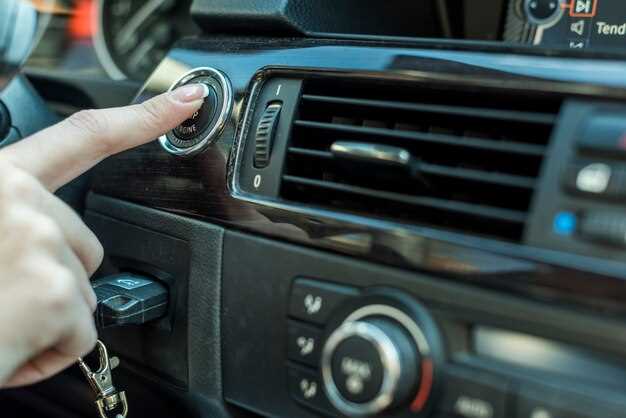

Understanding the integration of adjustable dampers into modern vehicles is essential for enhancing both ride quality and overall control. These sophisticated components allow for adaptive tuning of the suspension system, providing drivers with a tailored experience that meets varying road conditions and personal preferences. By adjusting damping rates, vehicles can achieve a delicate balance between comfort and performance.
The significance of dampers extends beyond mere comfort; they play a critical role in vehicle stability and responsiveness. Adjustable dampers facilitate fine-tuning of the suspension setup, enabling drivers to optimize handling characteristics. Whether navigating winding roads or cruising on the highway, the ability to modify the dampers directly influences ride dynamics, allowing a more enjoyable and controlled experience.
As automotive technology evolves, the application of adjustable dampers continues to gain momentum. These components are not just enhancements but crucial elements that dictate how a vehicle interacts with the road. This article will explore the profound impact of adjustable dampers on ride quality and control, examining their operational principles, benefits, and implications for both everyday drivers and motorsport enthusiasts.
How Adjustable Dampers Influence Vehicle Handling in Different Conditions

Adjustable dampers play a crucial role in determining vehicle handling characteristics by altering the suspension’s response based on varying conditions. These dampers can be fine-tuned to provide optimal ride quality and control, enhancing the driver’s experience significantly.
In adverse weather conditions, such as rain or snow, adjustable dampers can be set to a softer configuration. This setting allows for better absorption of road imperfections and improved traction, minimizing the risk of slipping. By providing a smoother ride, the driver can maintain better control of the vehicle, even in challenging situations.
Conversely, during performance driving scenarios on dry roads or racetracks, stiffer damper settings can be employed. This adjustment enhances responsiveness by reducing body roll and improving steering feedback. The result is a more agile ride, where the vehicle reacts promptly to driver inputs, significantly increasing handling precision.
Furthermore, adjustable dampers facilitate customization based on load conditions. For example, when carrying heavy loads, dampers can be adjusted to support the added weight, maintaining ride quality and stability. This adaptability ensures that regardless of the conditions, the vehicle handles predictably, contributing to overall safety.
In summary, the influence of adjustable dampers on vehicle handling across different conditions cannot be overstated. By carefully tuning damper settings, drivers can achieve a balance between ride quality and control, effectively enhancing the driving experience in diverse environments.
Optimizing Adjustable Damper Settings for Enhanced Ride Comfort

Adjustable dampers play a critical role in influencing the ride quality of vehicles by providing the ability to fine-tune the suspension characteristics. Optimizing these settings is essential for achieving a balance between comfort and control. Here are key considerations for enhancing ride comfort through damper adjustments:
- Understanding Damping Characteristics: The primary functions of dampers include controlling the oscillations of the vehicle and maintaining tire contact with the road. It is important to recognize how different settings affect these characteristics.
- Setting Up for Comfort:
- Use softer damping settings to absorb shocks more effectively.
- Focus on low-speed piston movements as they dictate the ride over small bumps and imperfections.
- Ensure that rebound settings allow for sufficient recovery time, which helps in maintaining ride quality without compromising control.
- Environmental Adjustments: Consider adjusting the dampers based on driving conditions to enhance overall ride quality:
- In urban settings, where potholes and speed bumps are common, softer settings may reduce jolts.
- On highways, stiffer settings can improve stability and handling at high speeds.
- For off-road conditions, adjustable dampers should be set to their softest to handle uneven terrain effectively.
- Driver Preferences: Understanding driver preference is crucial. Different drivers may prioritize comfort differently:
- Some may prefer a sportier feel with minimal body roll, while others may favor a plush ride over performance.
- Conducting tests to gather feedback from various drivers can provide insights into optimal settings.
- Regular Maintenance: Regular calibration and maintenance of adjustable dampers ensure they perform optimally over time. Periodic checks can avoid deterioration in ride quality due to wear and tear.
By focusing on the factors outlined above, vehicle manufacturers and users can effectively optimize adjustable damper settings, allowing for significantly enhanced ride comfort while maintaining the necessary level of control during various driving conditions.
Comparative Analysis of Adjustable vs. Fixed Dampers on Performance
In the pursuit of optimal ride quality and control, the choice between adjustable and fixed dampers plays a critical role in vehicle performance. Fixed dampers are designed to provide a consistent damping rate, which simplifies the tuning process and offers reliability. However, their inability to adapt to varying conditions can result in a compromise between comfort and handling, especially under diverse driving scenarios.
On the other hand, adjustable dampers provide versatility by allowing drivers to customize settings based on preferences or specific driving conditions. This adjustability offers enhanced performance by fine-tuning the balance between comfort and stiffness, ensuring that ride quality remains high even when road conditions change. Drivers can adjust the damping force to suit personal preferences or alter settings in response to varying load conditions, such as when carrying passengers or cargo.
Performance analysis reveals that vehicles equipped with adjustable dampers generally exhibit superior handling characteristics, particularly in high-demand environments like racing or off-road situations. The responsiveness of adjustable systems enhances cornering stability and reduces body roll, directly impacting ride quality and driver confidence. Conversely, fixed dampers can struggle to provide adequate performance in dynamically changing environments, leading to a less engaging driving experience.
Furthermore, the longevity of dampers can also influence overall performance. While fixed dampers may require less maintenance due to their simpler design, adjustable dampers often feature advanced technologies that can lead to longer-lasting performance if properly managed. Regular tuning and adjustment can help maintain optimal damping characteristics over time.
Ultimately, the choice between adjustable and fixed dampers hinges on the intended use of the vehicle. For those prioritizing ride quality and adaptability, adjustable dampers present a compelling advantage. On the contrary, for drivers seeking a straightforward solution with minimal complexity, fixed dampers may suffice. Understanding these distinctions is essential for maximizing vehicle performance across varying driving conditions.






